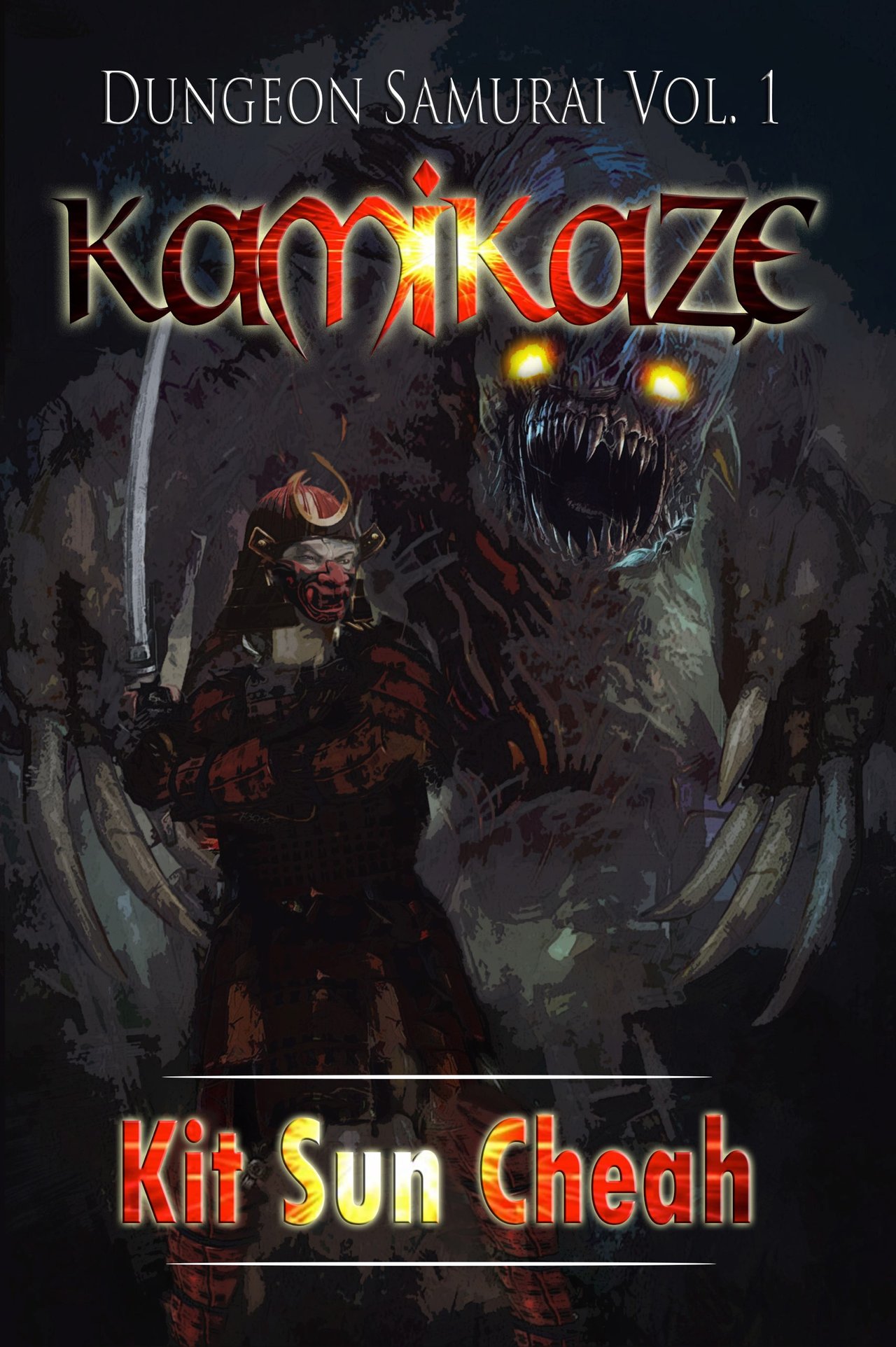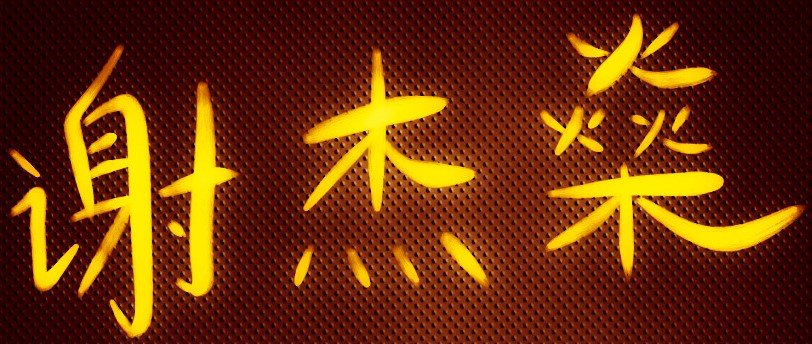
DUNGEON SAMURAI was an experiment.
In 2018, I enjoyed a moderate degree of success on Steemit. After earning a hefty chunk of change from publishing short fiction online, I decided I would take the plunge and publish a full-length fiction piece. A web serial, a modern-day incarnation of the serial pulp novels of the 1930s.
I set myself several stringent criteria. Each chapter must be reasonably short, no more than 3000 words apiece without justification. Relentless forward momentum. Realistic combat and military strategy. A fairly popular genre that would attract a lot of readers.
Meeting the last criterion came easy. Isekai stories, stories in which a Japanese character (usually a male high schooler) is transported to a parallel world of fantasy and adventure, were, and are, extremely popular. But I find them to be utterly unrealistic, overly focused on fanservice and pretty special effects than tactics or characters or even storytelling.
I wanted to write my own isekai story. A story of a young man transported to a horrific death world and forced to fight through a terrifying dungeon populated with endless hordes of monsters, utilising classical Japanese martial arts.
And thus, DUNGEON SAMURAI was born.
Best Laid Plans of Mice and Men
Men plan. God laughs.
The initial plan was to publish DUNGEON SAMURAI as a web serial, then re-publish it as a complete novel. The first draft topped out at just over 150,000 words — far too long for a single story, too short for a trilogy.
So I threw in some 30,000 extra words, along the way introducing new weaponry, tactics, monsters and mechanics. I’d like to think it was seamless enough that no one could notice the insertions.
With a total word count of over 180,000 words, I could neatly divide the story into three light novels, each running to about 60,000 to 65,000 words each.
Unfortunately, by the time I was done, Steemit suffered a major devaluation. The value of Steem and the Steem Based Dollar had dropped precipitously, and the number of votes needed to match my previous earnings were simply too high for a nobody like me to gather.
Thus, it was time for Plan B: crowdfunding.
In February, I launched my first-ever crowdfunding campaign for DUNGEON SAMURAI. It succeeded magnificently, exceeding the funding goal of $1000, topping off at $1105. The moment I received the funds, I swung into action, hiring artists and other specialists to bring the book out to the market.
And on 28 May, DUNGEON SAMURAI VOL. 1: KAMIKAZE will go live on Amazon.
The Devil is in the Details
DUNGEON SAMURAI is a reaction to the flood of isekai litRPG dungeon crawlers in anime and manga that seek only to chase the trend instead of delivering excellent stories. From the start, I made a conscious decision to refrain from using litRPG mechanics, both to differentiate myself from these other stories and to emphasise the grim nature of combat. An inch separates life and death, a single mistake is fatal, striking eyes and limbs have a tactical purpose, and there is no coming back from the dead.
In lieu of litRPG, I sought real-world combat traditions. The martial traditions of the samurai.
In homage to the genre, the protagonist of DUNGEON SAMURAI is an ordinary Japanese schoolboy. A first-year college student named Yamada Yuuki, who trains in classical Japanese martial arts as a hobby. He has just enough martial arts training that he knows how to handle a weapon, not so much that he is invincible on the battlefield.
I didn’t want to write an overpowered main character. OP MCs are the hallmark of other isekai stories; in DUNGEON SAMURAI, I wanted the hero to make mistakes, to be wounded, to be broken and worn down, and to have room to grow in martial skill. At the same time, I didn’t want him to be totally helpless either, or to suddenly gain superior martial abilities in an absurdly short time. He needed at least some training in martial arts to be a competent protagonist.
This being an isekai story, he does have a special skill — but so does everybody else. This skill, Kamikaze, does not, however, make him invincible. An invulnerable MC in this series would undercut the tone. To avoid this, I introduced a number of limitations. Kamikaze grants great strength and fearlessness, but at the cost of self-control. After the battle is over, it exhausts the user. And there is a sharp limit on the number of times it can be used per day.
A powerful skill without limitations is boring. A powerful skill with strict limits forces the character to be strategic in its use, to weigh the pros and cons, and to reserve it for the most desperate battles. To the reader, when the skill is fired, it marks a turning point, with Yamada committing his entire being into an all-or-nothing headlong assault, making for fine drama.
The big question was, what kind of martial art should Yamada use?
The titular dungeon is narrow and dark and cramped. To survive, the humans must fight in tight formations, armed with spears as their primary weapon, swords and knives as their secondaries. They must move as a unit, fighting shoulder-to-shoulder against swarms of bloodthirsty monsters.
This is the exact opposite of Japanese koryu.
Samurai trained for the environments they expected to fight in. A clash against a heavily-armored foe on the battlefield. A duel in a street. An ambush inside a room. The tactics and body mechanics they used were designed for their environment. The most important aspect among them is footwork; they relied on using superior footwork to evade incoming attacks.
But there is no room to maneuver in the dungeon, and carelessly swinging a weapon could strike the man next to you.
To meet the needs of the dungeon, I needed a koryu with linear kata, subtle body movements, and rapid changes in elevation. With adaptation, it could meet the needs of formation combat and the one-on-one battles that defined dungeon warfare.
I hunted high and low for the answer, scouring the Internet and YouTube for hours and days on end, before I finally found the answer: Kukishin-ryu.
At 1:11 of this video, you’ll see a signature attack from Kukishin-ryu. A rapid drop to the knees and a thrust to the throat. This technique is perfect for the dungeon. And that meant Kukishin-ryu was the official martial art of Yamada Yuuki.
Also, Kukshin-ryu translates as Nine Gods Spirit School. And the numbers nine and three show up often in the text. Perhaps it is serendipity, or a sign from the distant kami, but one does not simply ignore coincidences like this.
Having created a hero, I needed a suitable villain. The more powerful, the better. There is little tension in an overpowered hero beating down a weak villain, but there is immense potential for drama in a clash between a mighty villain and an outmatched and overwhelmed hero.
At the same time, I didn’t want a traditional demon lord. Your typical Maou wants to rule the land/world, along the way enslaving or destroying all of humanity and other designated good guy races. An atypical isekai story requires an atypical demon lord — and atypical monsters.
Instead of drawing inspiration from modern fantasy and isekai fiction, I looked at older fiction. Pulp fiction, encompassing weird tales and adventure and horror. The monsters weren’t just there to be beaten up; they had to be disturbing, frightening, and most of all, dangerous. And the demon lord most of all.
I’m not going to spoil it for you, but I think my interpretation of a Maou is both non-traditional and, once you understand what it truly is, terrifying.
DUNGEON SAMURAI began as an experiment, but it took on a life of its own. With the hero, villain, martial arts and monsters clearly defined, writing the story came naturally. The use of short chapters, originally intended for a web serial, translated cleanly to the new format of an OELN trilogy. While some of my stories in progress require longer chapters, going forward I want to experiment with shorter and tighter chapters, to ascertain audience reactions to them, and see if they are superior to longer ones.
DUNGEON SAMURAI is one part reaction to shoddy isekai stories, one part homage to action-packed pulp tales, one part military fantasy dungeon crawl. While it had a bumpy development cycle, I’m pleased to announce that it’s almost ready for prime time. If you want a dungeon crawler that fuses military fantasy tropes, authentic martial arts and samurai in a compact package, you get preorder DUNGEON SAMURAI VOL. 1: KAMIKAZE here!

Leave a Reply